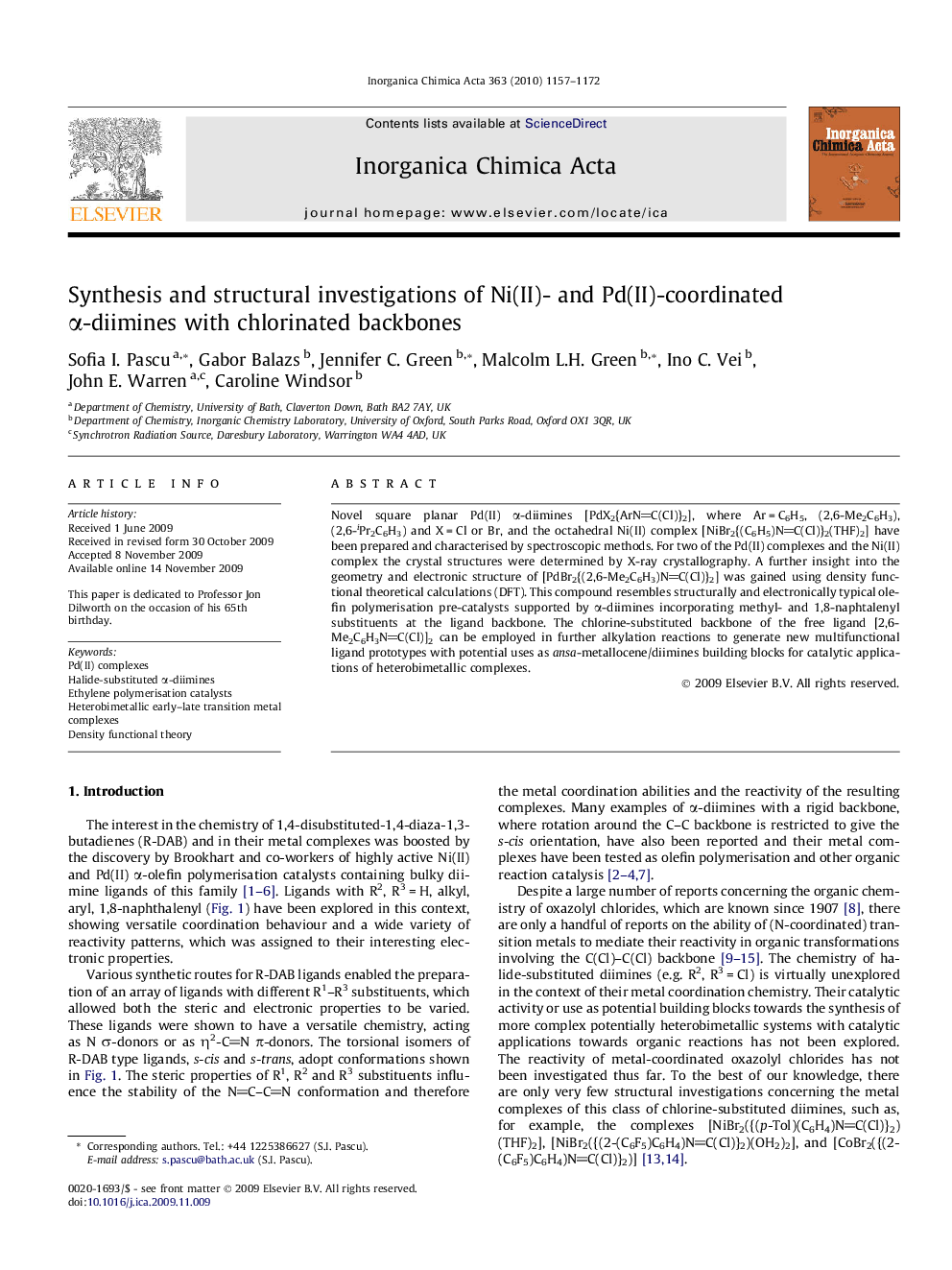| Article ID | Journal | Published Year | Pages | File Type |
|---|---|---|---|---|
| 1312608 | Inorganica Chimica Acta | 2010 | 16 Pages |
Novel square planar Pd(II) α-diimines [PdX2{ArNC(Cl)}2], where Ar = C6H5, (2,6-Me2C6H3), (2,6-iPr2C6H3) and X = Cl or Br, and the octahedral Ni(II) complex [NiBr2{(C6H5)NC(Cl)}2(THF)2] have been prepared and characterised by spectroscopic methods. For two of the Pd(II) complexes and the Ni(II) complex the crystal structures were determined by X-ray crystallography. A further insight into the geometry and electronic structure of [PdBr2{(2,6-Me2C6H3)NC(Cl)}2] was gained using density functional theoretical calculations (DFT). This compound resembles structurally and electronically typical olefin polymerisation pre-catalysts supported by α-diimines incorporating methyl- and 1,8-naphtalenyl substituents at the ligand backbone. The chlorine-substituted backbone of the free ligand [2,6-Me2C6H3NC(Cl)]2 can be employed in further alkylation reactions to generate new multifunctional ligand prototypes with potential uses as ansa-metallocene/diimines building blocks for catalytic applications of heterobimetallic complexes.
Graphical abstractThis paper describes solution, solid state and DFT-level theoretical investigations into a new class of palladium and nickel diimines and an accessible route towards new multifunctional ligand prototypes with potential uses as ansa-metallocene/diimines building blocks for heterobimetallic catalysis applications.Figure optionsDownload full-size imageDownload as PowerPoint slide
